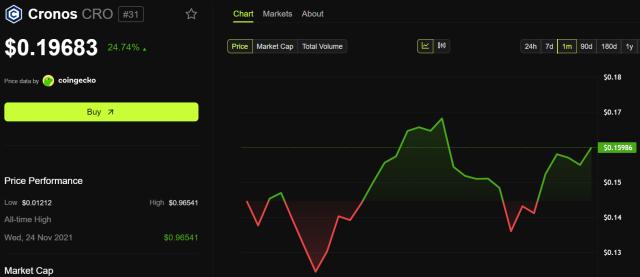At the Jackson Hole Global Central Bank Annual Meeting, Federal Reserve Chairman Powell sent a clear dovish signal. The market reacted quickly: Ethereum briefly broke through $5,000, setting a new all-time high, and the S&P 500 also ended its five-day losing streak, rebounding 1.5% in a single day and just shy of its all-time high.
However, this brief resurgence was quickly overshadowed by new concerns. Uncertainties such as the US recession theory, the PCE price index, and Nvidia's earnings report have revived market sentiment at elevated levels, leading to a sharp decline in risk appetite and a resurgence in the market. Currently, BTC has fallen below $110,000, and ETH has plummeted 8% in a single day to $4,400.

Next, BlockBeats has compiled traders’ views on the upcoming market conditions to provide some direction for your trading this week.
@0xENAS
I believe we are in the final leg of this bull market cycle that began in January 2023. These periodic market rallies tend to be short-lived, lasting only a month or two. With nearly all marginal buyers globally now in the market, the crypto market has fully absorbed incremental capital, pushing both BTC and ETH to record highs.
My previously set medium- to long-term target of 0.04 for ETH/BTC has been reached, which to me means that the main opportunities for ETH trading are basically over.
This also determined my strategic shift—I would no longer pursue aggressive, large-position strategies. My focus would shift from "accumulating capital" to "preserving capital." Perhaps I would miss out on the next crazy market, but that didn't matter, because it didn't fit my trading system.
This doesn't mean I've completely liquidated my position or even gone short. On the contrary, I still hold a long position, but the size has been significantly reduced. I will continue to monitor the mNAV of DATs as a core indicator. When this cycle ends, the mNAV of most DATs will fall below 1.
@CryptoHayes
I believe the market is likely to be even higher by the end of the year. As long as you're not using leverage, there's no need to worry too much about short-term fluctuations. Even if the market drops another 15%-20% this week, if you have spare cash, it's a good opportunity to add to your holdings. I'm almost certain we'll see "money printing" before the end of the year, with Bitcoin potentially reaching $250,000 and ETH potentially breaking $10,000. Once ETH breaks its all-time high, the upside potential will be completely unleashed. I even think $10,000 to $20,000 is a reasonable range.
The core of this logic lies in the fact that digital asset treasury companies are constantly raising funds. As long as the prices of the assets they purchase continue to hit new highs, fundraising becomes easier, and funds continue to push prices up, creating a positive feedback loop. There are two key variables behind this: how much money these companies can raise and how much liquidity the government will release. I'm not one to be obsessed with the "four-year Bitcoin cycle." The duration of this market cycle largely depends on the game between capital and policy.
The Trump administration hasn't fully entered "money printing mode" yet. It's more like testing the waters—tossing out various ideas to see which ones will actually work, while also signaling that it wants to revive the economy. The pace won't become clear until the Federal Reserve Chair and Board of Governors are finalized, including whether Trump can replace Powell and appoint his own people. This is expected to happen by the middle of next year.
Once the personnel arrangements are complete, the most frantic phase of monetary easing will occur from mid-2026 until the end of Trump's term. Without printing money, it's impossible to win the election. Democrats will print money, Republicans will print money too, and everyone will use liquidity to appease their supporters and interest groups.
As for treasury companies, some may be acquired due to valuation discounts or simply liquidate their assets. Leading projects will passively absorb capital and become winners, while laggards will be eliminated. However, this true "industry shakeout" may still take some time to occur.
Related reading: Arthur Hayes' latest interview: Autumn pullback, ETH sees $10,000-20,000 in the long term
@rickawsb
BTC and Bitcoin saw a sharp pullback today, with various theories as to why.
Some say it's because of a crash on the trading platform, some say it's because of a whale run, some say NVDA's earnings report this week may fall short of expectations, some say it's because Trump said he has the cards to "destroy" the Chinese economy, and some say it's because of a new report from Moody's and some economists that the US is on the brink of recession.
Other reasons will basically not cause long-term and large-scale impact. The recession theory can be discussed in more detail, after all, the economic signals are numerous and complex.
I believe that conventional economists have once again overlooked the AI revolution, a key, unconventional factor reshaping the economic landscape. If we must speak of recessionary pressures, a more appropriate description might be that the US economy is in a unique period shaped by a combination of cyclical pressures (as reflected in the LEI Leading Economic Index) and new structural drivers (as evidenced by the AI revolution). While recessionary risks are real and cannot be ignored, the accelerating development of AI is the decisive factor in the economy. The current situation is more like a "gear shift" in economic structural transformation than a simple cyclical recession.
According to estimates from major institutions, even under pessimistic projections, generative AI could trigger a "massive labor productivity boom" within the next one to three years, potentially adding trillions of dollars to global GDP. The massive investment in AI explains why hard economic data remains resilient despite numerous warning signs. Similarly, most arguments for a US stock market crash fail to factor in AI.
The conclusion is: there will be growing pains, there will be pullbacks in the bull market, but there will be no recession, the bear market has not arrived yet, the bull market is still here!
@Murphychen888
My definition of a bear market is a complete loss of confidence among major market participants in the future, as evidenced by the behavior of large holders.
If we were to follow a similar path, in November 2021, large holders (holding 100,000-100,000 BTC) frequently and consistently cashed out profits, exceeding $2 billion. However, even after BTC hit a record high of $120,000, the highest amount of profit taken out by large holders is less than $1 billion. This is completely different from the second peak in 2021.
In terms of chip structure, when the price reached $65,000 in 2021, a large number of cheap chips were concentrated in the $6,000-$10,000 range. The huge demand for profits meant that even if the price fell, they could still sell for profit.

In 2025, a large number of chips are concentrated in the $9,0000-$110,000 and $113,000-$118,000 ranges. If the price falls below the cost range, these chips will not only have no profit, but will also suffer huge losses. These chips are held by institutions that buy through ETFs and Wall Street capital.

So, does a technical K-line top divergence and high-level death cross necessarily lead to a prolonged bear market like the Double Top in 2021? Is there no need to consider objective factors such as the structure of holdings, whale behavior, and macro easing? While I agree that we are entering a "periodic weak market," I disagree with the blindly mechanical and rigid approach, which smacks of selling anxiety.
@Vida_BWE
I just feel that the bull market progress bar has been loaded 80%, and those who continue to invest for the long term can stop. It is completely cost-effective to buy spot now. Those who already have a full bag should switch to the mode of reducing positions only.
Assuming the investment cycle is 6 months
Option A: Buy spot. The market total cap may continue to rise by 30%, but you will also have to bear the risk of a 30%+ pullback.
Plan B: U-based arbitrage, you can make 20% with 0% drawdown
For big money players who "manage their own money", a 30% growth in the entire portfolio with a 0% drawdown in a year is more cost-effective than a 50% growth with a maximum drawdown of 20%.
On the contrary, big money players like strategy and sbet who "manage other people's money" are not afraid of losses. After all, they are not losing their own money, but earning AUM. Therefore, they don't care much about drawdowns and just buy without looking at the price.
@fundstrat
Citing Bloomberg analysts, Tom Lee, CEO of BMNR, predicted that ETH would bottom out in the next few hours. The current price odds are quite good, and a drop below $4,067, the lowest point since August 18th, would indicate a short-term bearish outlook. Ideally, ETH would bottom out around $4,300 in the next 12 hours, then rebound above its previous high of $5,100 to reach around $5,400.







